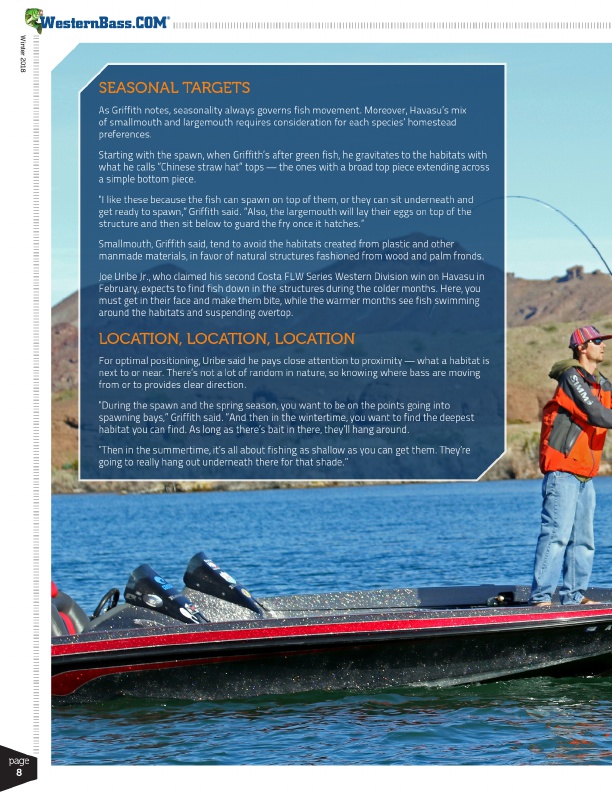
Winter 2018
®
SEASONAL TARGETS
As Griffith notes, seasonality always governs fish movement. Moreover, Havasu’s mix of smallmouth and largemouth requires consideration for each species’ homestead preferences.
Starting with the spawn, when Griffith’s after green fish, he gravitates to the habitats with what he calls “Chinese straw hat” tops — the ones with a broad top piece extending across a simple bottom piece.
“I like these because the fish can spawn on top of them, or they can sit underneath and get ready to spawn,” Griffith said. “Also, the largemouth will lay their eggs on top of the structure and then sit below to guard the fry once it hatches.”
Smallmouth, Griffith said, tend to avoid the habitats created from plastic and other manmade materials, in favor of natural structures fashioned from wood and palm fronds.
Joe Uribe Jr., who claimed his second Costa FLW Series Western Division win on Havasu in February, expects to find fish down in the structures during the colder months. Here, you must get in their face and make them bite, while the warmer months see fish swimming around the habitats and suspending overtop.
LOCATION, LOCATION, LOCATION
For optimal positioning, Uribe said he pays close attention to proximity — what a habitat is next to or near. There’s not a lot of random in nature, so knowing where bass are moving from or to provides clear direction.
“During the spawn and the spring season, you want to be on the points going into spawning bays,” Griffith said. “And then in the wintertime, you want to find the deepest habitat you can find. As long as there’s bait in there, they’ll hang around.
“Then in the summertime, it’s all about fishing as shallow as you can get them. They’re going to really hang out underneath there for that shade.”
page
8